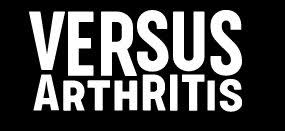If you have pain in your knee which is not helped by simple painkillers and if significant degenerative changes are present in your knee then you may benefit from a knee replacement. Mr Brew will explain in detail at your consultation why you may benefit from a knee replacement and answer any of your questions.
A knee replacement involves removing the worn-out joint surface of the knee by reshaping the ends of the thigh bone (femur) and top of the shin bone (tibia) to allow resurfacing with metal components. A plastic insert (polyethylene) is placed between the femoral and tibial components to allow smooth articulation as the knee bends, thereby restoring knee movement and improving pain. The under surface of the knee cap can also be resurfaced with a plastic button.
The vast majority of knee replacements are performed under spinal anaesthetic as this has some benefits over a general anaesthetic such as better post-operative pain relief, less side effects and the ability to eat and drink soon after your operation. Occasionally a general anaesthetic is required if a spinal anaesthetic is not possible or for patient preference . The anaesthetist will discuss this with you before your operation.
A knee replacement usually takes between 1-1 ½ hrs but the times vary depending on the complexity of the surgery.
You will be admitted on the day of your operation and seen by Mr Brew and his anaesthetist on the ward before surgery where your consent for your knee replacement will be re-confirmed and any final questions answered. A mark will be placed on your operative leg before you are transferred to theatre. On your arrival in theatre you will be greeted by the anaesthetist again in the anaesthetic room where if you have any further questions they can be answered before your anaesthetic is administered. A tourniquet will then be placed around the top of your thigh and some leg positioning props attached to the table to hold your leg in a safe and comfortable position required for surgery. Some surgical drapes will be placed around your leg and a cleaning solution will be applied to your skin before proceeding into theatre. Your leg will be painted again with a special antiseptic solution to help reduce the risk of infection. This will leave your leg looking a slightly odd colour and may take a few days to wash off afterwards but is nothing to be worried about.
Your leg will then be covered with sterile surgical drapes and preparations for surgery will be made with the surgical team. If you have a spinal anaesthetic you may hear the various checks which take place between the team but usually the anaesthetist will have given you something to relax you so often you won’t remember much afterwards.
At the end of your operation you will have a bulky bandage placed around your knee which is covering the dressing beneath.
You will be taken to the recovery area of theatre where you will be made comfortable and the nurses will check your observations and you will be reviewed by Mr Brew before being transferred back to the ward.
The bulky bandage on your knee is removed on the ward by the nurses and cold packs are applied to your knee to help reduce swelling.
It is important the dressing is kept in place until the wound has fully healed which takes approximately 14 days. It is also important to keep your wound dry until it is fully healed to minimise the risk of infection.
The physiotherapists will get you up standing and taking a few steps on the day of your surgery, however if you had your operation later in the day this may take place the following morning.
No. The wound will be closed with absorbable stitches under the skin and with skin glue. Occasionally you will require trimming of some suture ends once the dressing has been removed at 14 days.
Mr Brew will see you on the ward following your operation and will review your progress in the outpatient clinic 6-8 weeks following your surgery.
The recovery process requires hard work performing all the exercises the physiotherapists will set you. It is really important to do these exercises regularly to prevent your knee going stiff and becoming painful. This requires determination in the first few weeks as there will be some residual discomfort in your knee but you will reap the benefits if you persevere. 8 weeks following surgery you can expect to be walking without sticks but it can take 3 months or even longer to make a full recovery. It is important when resting to always keep your leg elevated to minimise swelling.
If you are normally healthy you can expect to spend no more than two nights in hospital, even though some people go home the day following surgery others may take longer.
There are no fixed rules but Mr Brew advises to wait at least 6-8 weeks before you go on a car journey and not to fly for at least 3 months following your knee replacement due to the increased risk of venous thromboembolism (blood clots developing in your leg that can spread to your lungs).
You should not drive for 8 weeks following your knee replacement and not before you feel completely fit and well. You should practice working the car pedals on the drive and performing an emergency stop whilst stationary. If your knee becomes painful doing these activities you should not drive. If you are involved in an accident your insurance company may look into your recent medical history and this could affect your claim.
This depends on what type of job you do. If you have a desk-based job you should be able to return at 8 weeks but if you have a heavy manual job you made need a few more weeks to recover fully. Mr Brew will discuss this with you at your follow up consultation. Most people are back at work by 3 months.
If you are suffering with constant knee pain that is preventing you from doing your normal daily activities and have significant degenerative changes present in your knee, a knee replacement can be a very successful operation for relieving pain and improving mobility.
Approximately 90 out of 100 people have excellent pain relief and improved function in their knee following knee replacement surgery. However approximately 5 out of a 100 people have some ongoing aches and pains in their knee but are generally better than before their operation. We do not understand why, but unfortunately in a small number of people their pain is not made better following knee replacement surgery.
Mr Brew will explain the risks and rewards of undergoing a knee replacement at your consultation and answer any questions you may have.
A knee replacement is a routine operation but it is a major operation and therefore there are always some risks involved. These risks are rare and include but are not limited to:
– Ongoing pain and stiffness, a deep vein thrombosis (blood clot) and wear and failure of the components that make up the knee replacement (2-5%).
-Infection and wound healing problems (1-2%)
-Very rarely, blood clots in the lung (pulmonary embolism), nerve and blood vessel damage, chest infection, heart attack and death can all occur as a result of having knee replacement surgery. (<1%).
Running or jogging on a hard surface can put excessive stresses on your joint replacement which could cause early wear and failure. It is recommended therefore to adopt other non-impact exercises to keep fit such as swimming or cycling.
Skiing is not recommended after a knee replacement due to the high impact nature of this activity. This places significant stress on your knee replacement and risks serious injury if you were to fall over at speed. The twisting forces involved could result in the bone around your knee replacement breaking and could even cause a dislocation of your knee.
You can of course go skiing at your own risk but you need to declare you have had a joint replacement to your travel insurers.
Cycling can be a good way of building up muscle strength in your leg as well as improving your overall fitness following surgery. It is important to have the saddle high to keep your knees below the level of your hip when pedalling. It would be sensible to start gently on a stationary exercise bike until you gain confidence.
Swimming is an excellent form of exercise as the water supports your joints whilst exercising. It can help build your strength and over all fitness. You may find breast stroke uncomfortable in the first 3 months and can discuss various strokes with your physiotherapist.
If your problem is within office hours please call the ward where you were treated and the nurse in charge will contact Mr Brew if necessary. This contact information will be given to you before you are discharged. If your problem is urgent and out of hours please go to your nearest Accident and Emergency Department.







